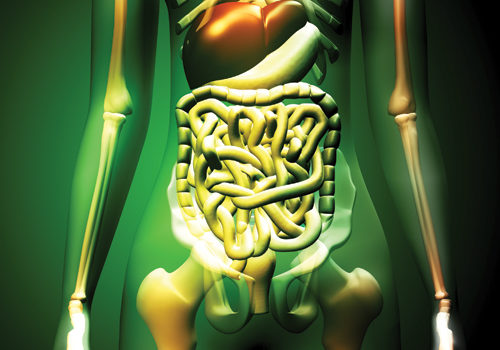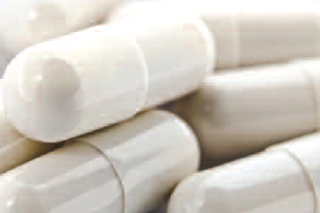For consumers, retailers and product makers alike, digestive health can be a tough category. There are enough natural options to satisfy every complaint or concern, but there’s also enough complexity to make connecting consumers with the right products a tall task.
Some might even be reticent to let their needs be known, but that’s changing. “While a few shoppers may feel unnecessarily sheepish about buying or asking about digestive health products at retail, that awkwardness seems to be dissipating with each passing year,” says Dan Lifton, CEO of Quality of Life Labs, Purchase, NY. Make it all easier for your customers to digest by knowing your way around top products like probiotics, enzymes, fiber, botanicals and functional foods.
Navigating Digestive Health
There are enough twists and turns in the digestive health category to rival the digestive tract itself. Many of these issues and trends concern probiotics: how they’re delivered, what their role is and what consumers know about them.
Some worry that certain products might be counterproductive. “My biggest concerns are the presence and use of ingredients and nutrients that tend to have a negative effect on digestive health in digestive health products,” says Kiran Krishnan, head of scientific affairs for Thrive Probiotic, Park Ridge, IL. Fermented drinks, for example, often have an unusual taste, and Krishnan notes that many companies add sugars to overcome it. But, research shows that sugar can be disruptive to the ecology of the gut. He also points out that most probiotics sales still come out of the dairy aisle, but many people are sensitive to dairy and dairy has been linked with gut inflammation.
Another concern, according to Krishnan, is that 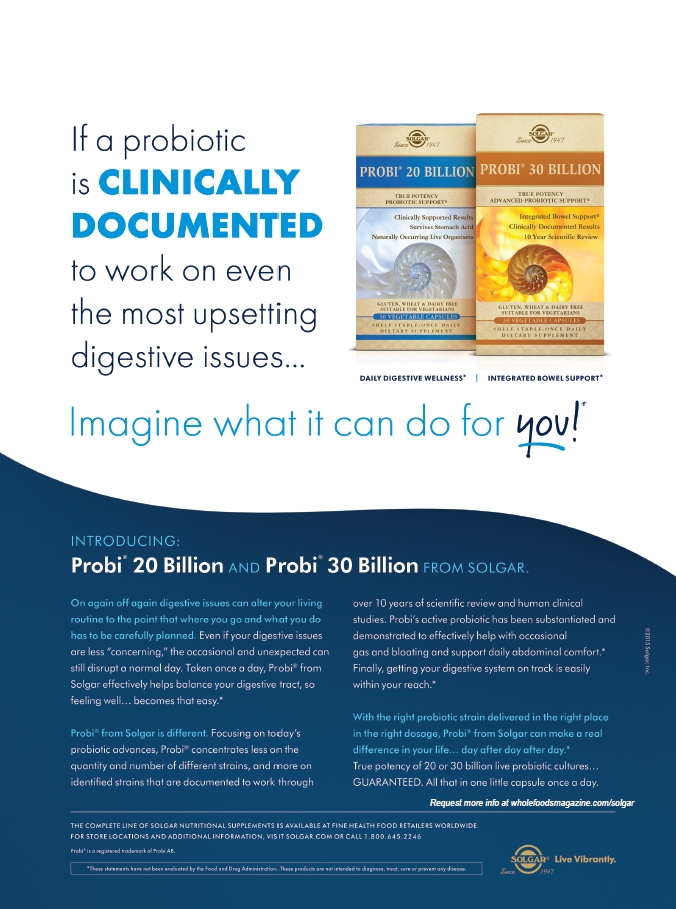 many fermented beverages don’t necessarily contain clinically relevant dosages of probiotics, making them a more passive option for addressing dysbiosis (i.e., bacterial imbalance). He presents the analogy of taking a complete multivitamin each day versus drinking a bottle of vitaminwater.
many fermented beverages don’t necessarily contain clinically relevant dosages of probiotics, making them a more passive option for addressing dysbiosis (i.e., bacterial imbalance). He presents the analogy of taking a complete multivitamin each day versus drinking a bottle of vitaminwater.
Yet, many consumers feel they are supporting their digestive health effectively by grabbing a yogurt or fermented beverage when the mood strikes them. “This is why the beverage- and dairy-based probiotic sector sales are upwards of $30 billion per year, yet capsule-based probiotic sales are barely $1 billion per year,” Krishnan says. If those figures were reversed, he argues, the prevalence of digestive health issues would be greatly reduced.
Of course, probiotics in foods and beverages are still of great value to our health. “Fermented foods have been around for thousands of years and we as Westerners could maintain better health if we ate more fermented foods on a daily basis,” says Guy Devin, Ph.D., CCN, national sales manager and educator for Probium LLC, Wausau, WI. Lifton agrees, saying that fortified foods with levels of digestive-support ingredients that are efficacious and in keeping with published research can provide a good foundation for digestive health.
But a yogurt here or there is not usually going to make a big impact. “This is because the cells of our intestinal lining constantly shed, and in order to keep a sufficient supply of probiotics in the system, daily use is suggested,” says Todd Beckman, cofounder and COO of GoodBelly, Boulder, CO. He says that while food industry practices in industrialized countries have eliminated the bad bacteria in foods, we’ve lost the good bacteria as well. His company’s probiotics are grown in a controlled environment and added to its functional drink products after the drinks are pasteurized, so only good bacteria are present.
The probiotic market is too focused on astronomical numbers and refrigeration, believes Tina Anderson, president of Thrive Probiotic. Many tend to be influenced by the number of live cultures in a probiotic product (50 billion, 100 billion, etc.) or whether a supplement needs to be refrigerated. Anderson isn’t sure that either these high numbers or refrigeration are necessary for an effective probiotic product.
Despite the scientific and public interest in learning more about the human microbiome, there are still numerous gaps in the consumer’s understanding of probiotics, according to Susan Hazels Mitmesser, Ph.D., director of nutrition research at Solgar, Leonia, NJ. She concurs with the notion that more probiotics in a product does not always equate with more health benefits. Hazels Mitmesser also explains that not all probiotics are created equal, and that consumers need to understand that different strains of probiotics have very different health impacts. Likewise, she says, there is no single “magic” probiotic strain that can cure all ills.
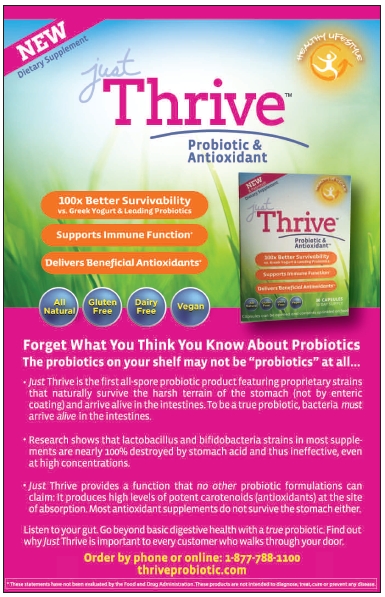 The manufacturing of probiotics is a delicate process that requires great care, says Devin. The selection of probiotic strains, the way the strains are cultured and achieving shelf stability in the end product are all key elements in making a premium quality probiotic product, he explains.
The manufacturing of probiotics is a delicate process that requires great care, says Devin. The selection of probiotic strains, the way the strains are cultured and achieving shelf stability in the end product are all key elements in making a premium quality probiotic product, he explains.
Due to issues of product stability and formulation, the numbers of probiotic bacteria that can be delivered alive after many months on the shelf are often exaggerated, says Dallas Clouatre, Ph.D., consultant for R&D to Jarrow Formulas, Inc., Los Angeles, CA. One culprit are the herbal ingredients often combined with probiotics. Clouatre sasy many herbs and extracts bring high water activity or are directly toxid to probiotics, thus reducing probiotic shelf life. Green tea catechins are one example.
Consumers are not positioned to be aware of these issues, and simply rely on labels and marketing, Clouatre points out. "Therefore, it is at least partly the responsibility of retailers to educated themselves maintain a level playing field in which the reality of products match the claims and marketing," he says.
As a category, probiotics are becoming more technical, says Neil E. Levin, CCN, DANLA, nutrition education manager for NOW Foods, Bloomingdale, IL. Research into probiotics needs to show clinical efficacy, Levin says. It also must prove that a given product is bile- and acid-resistant to ensure that the probiotics can survive the trip though the gastrointestinal system.
Furthermore, ID testing of probiotic strains and substrains is now standard, so Levin says to look for labels that detail the specific strains included in the product. The Latin binomial name for probiotics (like Lactobacillus acidophilus) is no longer sufficient to indicate which of the hundreds of potential substrains is being delivered. Lactobacillus acidophilus La-14, for example, is a strain that can have its identity verified. “We can look up those strains in PubMed and find studies proving their efficacy in human health, so their benefits are real, not merely theoretical,” says Levin.
Michael Bush, senior vice president of Ganeden Biotech, Mayfield Heights, OH, says that when his company owned consumer brands (now sold by Reckitt Benckiser as the Digestive Advantage brand), it learned about what’s resonating with shoppers in this market. “We have found that consumers are looking for alternatives to pills and yogurts and are really enjoying being able to meet their digestive health needs through the daily consumption of products such as kombucha, tea, meal replacement shakes and bars, trail mixes and frozen desserts,” says Bush.
He adds that there are several primary concerns for consumer packaged goods companies looking to enter the digestive health space. These include whether the digestive support ingredient they are choosing is generally recognized as safe by the U.S. Food and Drug Administration (FDA); whether it is supported by published, peer-reviewed science; and if the ingredient supplier is adequately supporting the brand.
Beckman says the uptick in consumer interest in probiotics has presented an opportunity for products like those sold by his company. He thinks there is potential for growth in products like functional beverages that can be integrated into a variety of lifestyles and suit all tastes and needs.
Prebiotic ingredients, which serve as “food” for beneficial bacteria, are also trending, according to Joseph O’Neill, president and general manager of BENEO Inc., Morris Plains, NJ. O’Neill says the Mintel Global New Products Database shows that prebiotics are popping up in a range of food and drink categories including infant formula, dairy products, breakfast cereals, baked goods, ice cream and beverages.
While the average consumer understands the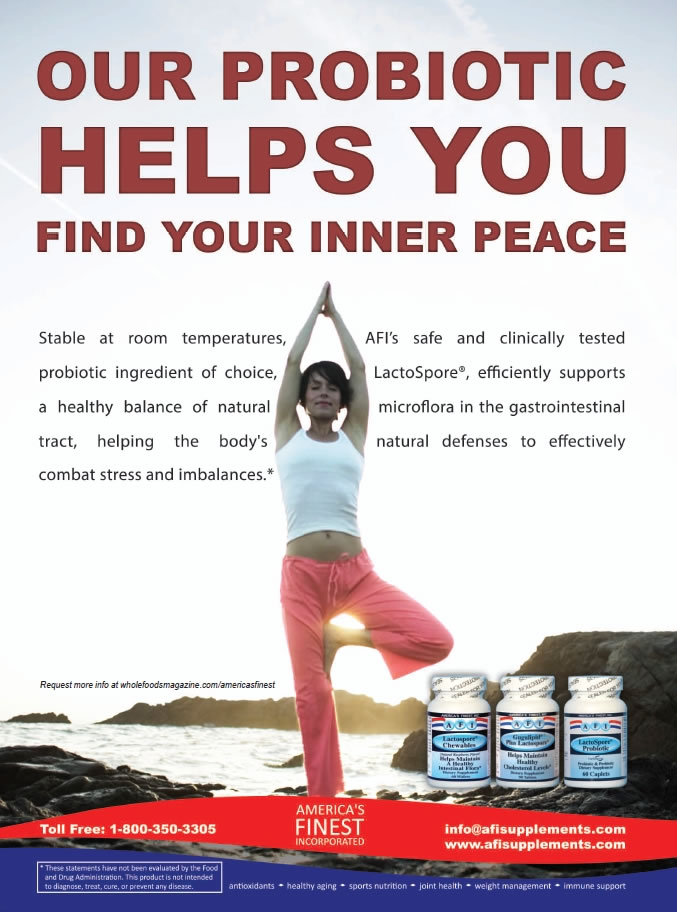 relationship between traditional fiber and regularity, Bush says we have a ways to go before the story that prebiotic fibers are “food” for probiotics is widely understood. “The prebiotic concept is relatively new and has been found to be confusing to consumers,” says Bush.
relationship between traditional fiber and regularity, Bush says we have a ways to go before the story that prebiotic fibers are “food” for probiotics is widely understood. “The prebiotic concept is relatively new and has been found to be confusing to consumers,” says Bush.
“We have noticed a greater interest in enzymes from consumers, retailers and the media as more people become aware of the overall benefits of enzymes, especially for digestive support,” says Maday Labrador, Ph.D., vice president of education at Enzymedica, Venice, FL.
These three prongs of the digestive support market (though other products, such as botanicals, are also important options) were the primary segments examined in a market report cited by Jay Levy, director of sales, Wakunaga of America Co., Ltd., Mission Viejo, CA. The market for prebiotics, probiotics and enzymes is expected to reach $495.3 million in 2015, and should be enjoying an estimated compound annual growth rate of 13.2% (1). “This indicates a very bright future for the supplement industry as well as for retailers,” Levy says.
Focusing on Heartburn
A recent report says heartburn and indigestion remedies represent the largest and most dynamic corner of the digestive health market, so retailers should pay it some special attention (2). The solutions of choice for people with heartburn and indigestion are most often OTC and prescription proton pump inhibitors and antacids. But these can cause unwanted side effects and many consumers may simply want to know what else is out there. What solutions does the natural channel offer?
Before we get into the options, it’s important to note that acid is not the enemy. Indeed, acid reflux is seldom due to excess stomach acid, according to Martie Whittekin, CCN, author, radio host, and member of the scientific advisory board of Essential Formulas, Irving, TX, makers of Dr. Ohhira’s Probiotics. “We desperately need stomach acid for digestion of protein, the assimilation of minerals and for triggering the manufacture of B12,” she says.
Heartburn is as common as it is unpleasant, and it can happen to anyone, young or old, male or female, says Trisha Sugarek MacDonald, B.S., M.S., director of R&D and national educator for Bluebonnet Nutrition Corporation, Sugar Land, TX. Many experience it for the first time while pregnant. “It can make you feel as though someone has lit a small bonfire in your chest, and it’s burning its way up to your neck,” Sugarek MacDonald says.
Whittekin says that the acid-blocking medications often advertised on television are only safe to use for a few weeks, and not over the course of years. In her book on heartburn, she details how long-term use can increase the risks of hip fracture, dementia and pneumonia (3). Given these issues, moderating heartburn with options like probiotics, enzymes and aloe vera makes more sense, she says.
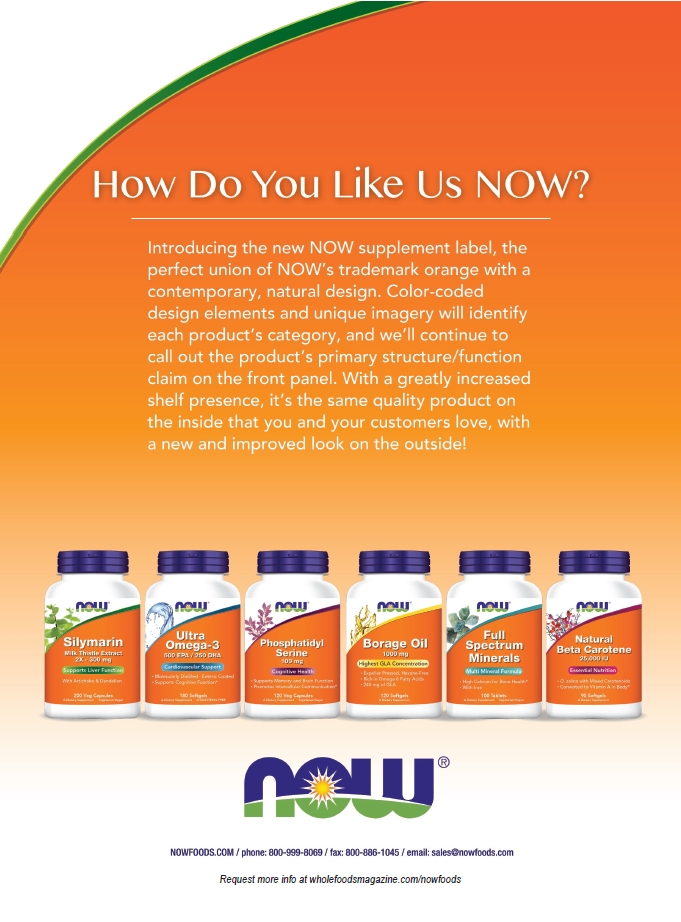 In researching a booklet on aloe vera, Whittekin says she found that the polysaccharides in the gel can help heal the lining of the intestinal tract. Good digestive support supplements, she explains, often contain polysaccharides with a variety of molecular weights.
In researching a booklet on aloe vera, Whittekin says she found that the polysaccharides in the gel can help heal the lining of the intestinal tract. Good digestive support supplements, she explains, often contain polysaccharides with a variety of molecular weights.
One common natural heartburn remedy is calcium carbonate, which happens to be the active ingredient in many OTC antacids like TUMs, according to Sugarek MacDonald. She says chewing calcium carbonate can extinguish the burn in minutes.
Many herbs are thought to quell indigestion. “Herbs like marshmallow root can soothe an upset stomach,” says Devin. Sugarek MacDonald lists angelica, caraway, clown’s mustard plant, German chamomile, greater celandine, lemon balm, licorice, milk thistle and peppermint. She adds that peppermint oil may actually worsen heartburn, so it is not a good option for those suffering from gastroesophageal reflux disease (GERD). Peppermint tea is beneficial due to its menthol content, which acts as a kind of anesthetic for the stomach, she says. Spearmint has similar effects to peppermint, though it is milder.
A combination of a proprietary licorice root extract (GutGard from Natural Remedies) and artichoke leaf extract can relieve the abdominal discomfort, bloating and fullness of indigestion, says Lifton. He points to a double-blind, placebo-controlled human study that found GutGard reduced symptoms of occasional heartburn significantly versus placebo (4).
“Chamomile is an herbal tea traditionally used for calming and relaxation, and to help support digestion,” says Gene Bruno, M.S., MHS, VMS formulation, Twinlab Corporation, New York, NY. Fennel tea is used to help alleviate bloating and gas. A ginger and peppermint herbal tea combination can be used to soothe an unsettled stomach, Bruno adds.
According to Sugarek MacDonald, the mechanism behind ginger’s soothing qualities isn’t well understood, but it’s theorized that compounds in ginger inhibit the aggregation of platelets and stem inflammation by inhibiting the COX-2 enzyme, which can provide digestive relief.
Turmeric, known for its active ingredient curcumin, has long been used for gastrointesinal support, Levin says.
Combinations of herbs, minerals and enzymes can be effective, according to Labrador. She says her company offers a blend of enzymes, marshmallow root, papaya leaf, prickly ash bark, gotu kola and zinc carnosine for occasional heartburn and indigestion. Marshmallow has been found to help normalize mucous secretions, papaya leaf actually contains proteolytic (act on proteins) enzymes, prickly ash is known to support the tissue of the gastrointestinal tract, gotu kola is rich in B vitamins and potassium and is known to support the gastric mucosal barrier. “Zinc carnosine has been shown to strengthen the mucosal lining of the stomach,” says Labrador. According to Levin, a patented zinc carnosine (PepZin GI) has been shown to promote a healthy stomach lining and support proper gut repair.
vitamins and potassium and is known to support the gastric mucosal barrier. “Zinc carnosine has been shown to strengthen the mucosal lining of the stomach,” says Labrador. According to Levin, a patented zinc carnosine (PepZin GI) has been shown to promote a healthy stomach lining and support proper gut repair.
Clouatre says d-Limonene, usually extracted from citrus fruits, has seen use as an alternative to proton pump inhibitors, though doctors must always be advised before any change in treatment regimen. Another option, according to Clouatre, is extract of Chinese honeysuckle flower. Combinations of extracts from botanicals like Iberis amara, Matricaria chamomilla, Carum carvi, Mentha piperita, Glycyrrhiza glabra, Melissa officinalis, Chelidonium majus, Silybum marianum and Angelica archangelica have also shown benefits, he says..
Levin says that as a potent free radical scavenger, melatonin protects against oxidative stress throughout the digestive tract. It can also help support healthy gastric pH levels, support pepsin production and help regulate intestinal motility.
“A probiotic containing bacillus spores not only helps alleviate the symptoms of heartburn and indigestion, but it also helps fix the problem that the symptoms are stemming from,” says Anderson. Popular OTC products temporarily relieve symptoms, she says, but do not correct underlying dysbiosis in the gut as bacillus spore-based probiotics can.
Probiotic Prowess
Health through probiotics. Probiotics are known to be integral in maintaining overall digestive well-being. Piles of research are also showing their utility in helping to improve specific digestive conditions and disorders. Bush believes probiotics should be viewed through both of these lenses. Maintaining a healthy gut is especially important because the digestive system is “ground zero” for many of the body’s most vital functions. In addition, depending on the strain, Bush says probiotics can help in the effort to avoid or alleviate specific issues.
Probiotics are among the first supplements people should consider taking, as healthy gut flora is critical to the utilization of all the food we eat and other supplements we may take, says Devin. If someone happens to be dealing with a condition like irritable bowel syndrome (IBS) or inflammatory bowel disease (IBD), he suggests they consult with their doctor about using probiotics.
Robert Kay, Ph.D., chief science officer of Renew Life, Palm Harbor, FL says that individuals with conditions like IBS and IBD should be treated by a gastroenterologist, because they are in fact disease entities. “Their causes can be very serious and only a well-trained healthcare practitioner is capable of fully diagnosing the problem,” says Kay. Probiotics, he adds, are dietary supplements and should be consumed by those that want to increase their intake of beneficial microorganisms.
Using an oft-cited figure, Krishnan tells us that over 10 times more bacterial cells are present in the human gut than actual human cells. Humans in modern societies inflict a daily assault on the friendly bacteria in their gut, he explains. Flouride-enriched water, antibiotics, excessive sterilization, processed foods, artificial dyes and flavorings, household chemicals, environmental pollutants, alcohol, smoking and other factors all can disrupt the growth and colonization efforts of probiotics, says Krishnan, adding that these disruptions directly lead to disease. Levy elaborates on this unfortunate drawback of antibiotic medication. “Antibiotics, which indiscriminately kill bacteria, are probably the best known threat to your gut’s good bacteria,” he says.
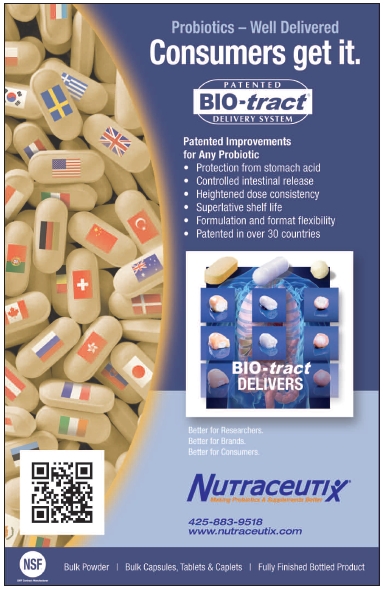 Probiotics should be respected for their ability to reverse some of this harm and positively impact overall health, Krishnan argues, stating, “Clearly, other extrinsic factors such as diet play a role, but probiotics are a central figure in this fight to maintain digestive balance.”
Probiotics should be respected for their ability to reverse some of this harm and positively impact overall health, Krishnan argues, stating, “Clearly, other extrinsic factors such as diet play a role, but probiotics are a central figure in this fight to maintain digestive balance.”
The proper due for probiotics has been more forthcoming lately. “Scientists and even mainstream medicine are finally giving probiotics the attention and the respect that they deserve,” says Whittekin. The search for answers to life-threatening, antibiotic-resistant infections like Methicillin-resistant Staphylococcus aureus (MRSA) and Clostridium difficile has tacked a sense of urgency onto probiotic research, she says. Beyond these practical matters, she says scientists seem to be realizing that microorganism balance in the gut is fundamental to our health.
The studies that made up the recently concluded Human Microbiome Project represent some of the most intriguing, cutting-edge science today, says Devin. The results of this government-funded project show the validity of using beneficial bacteria to alleviate the suffering of people with various health issues.
The use of prebiotics and probiotics has been critical in the developing world to help those with diarrheal diseases, says Sugarek MacDonald. Diarrhea that lasts several days can lead to a fatal loss of water and electrolytes, and diarrhea remains a primary cause of preventable death in children under five, she says. She says a 2010 Cochrane review examined 63 probiotics trials that included over 8,000 people with infectious diarrhea. It found that those who took probiotics were sick 25 hours less on average, without any adverse side effects (5).
Research in areas like these is ongoing, and results do not always agree. “The largest and best-designed study to date, published in The Lancet in 2013, found that probiotics were no better than a placebo in preventing diarrhea in older people taking antibiotics,” Sugarek MacDonald notes (6).
In order to produce benefits for the body, probiotics play quite a multifaceted role. Hazels Mitmesser says that the complex ecosystem of intestinal bacteria is involved in a variety of functions: synthesizing vitamins, producing digestive enzymes, aiding in the absorption of nutrients, maintaining the integrity of the colon lining and supporting the immune system.
According to Levy, they provide protection against harmful microbes, fungi and viruses by producing compounds like lactic acid, acetic acid and hydrogen peroxide that increase the acidity of the intestines. Probiotics also produce bacteriocin, a natural antibiotic that kills harmful microorganisms and enhances immunity by boosting disease-fighting cells, he says.
Whittekin calls the beneficial compounds that probiotics produce “postbiotics.” She explains that probiotics begin producing them after they implant in the digestive tract, find food and multiply. Significant amounts of “postbiotics” can be delivered in supplement capsules, but only if the probiotic has been fermented for years on a vegetable food supply, she says.
“By consuming high-quality, diverse, high-potency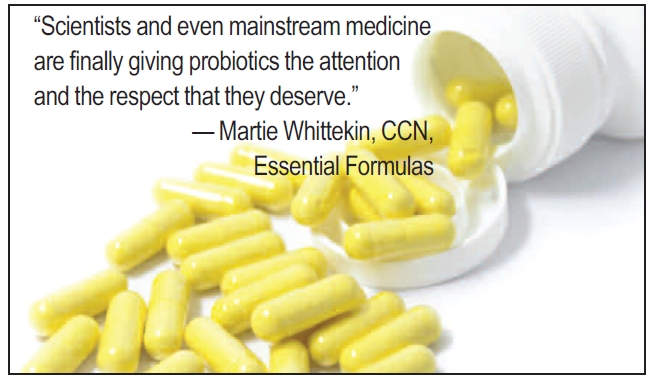 probiotics, a person enables the digestive system to respond to changes in diet, stress (which can negatively impact the microbiota), and other internal insults in a more optimal manner,” says Kay. The digestive system should be able to counter the microbial pathogens occasionally found in foods more effectively. In these scenarios, “good” bacteria coat the digestive tract and help prevent problematic microorganisms from attaching to the inner gut wall.
probiotics, a person enables the digestive system to respond to changes in diet, stress (which can negatively impact the microbiota), and other internal insults in a more optimal manner,” says Kay. The digestive system should be able to counter the microbial pathogens occasionally found in foods more effectively. In these scenarios, “good” bacteria coat the digestive tract and help prevent problematic microorganisms from attaching to the inner gut wall.
The same holds true, Kay adds, for people who travel. The different foods and microbes in the traveling environment can be problematic for the digestive system, not necessarily because the microbes are disease-causing, but simply because they are different than what the body is accustomed to.
Companies frequently offer a range of probiotic products designed to provide either general or specific support, says Clouatre. For example, his company offers serval products (like Jarro-Dophilus EPS) for broad-spectrum support, along with products like Ideal Bowel Support 299v for more focused support.
Clouatre points out, however, that the actual research literature on probiotics seldoms makes these distinctions. Instead, it will include observations and conclusions that meld together general support and alleviation of specific issues. "Indeed, this is an FDA-constructed dichotomy and not one taken from the research," he says.
A major consequence of this FDA-imposed paradigm is that all of the benefits associated with probiotics don’t necessarily make it onto the labels of supplements and other products. While manufacturers are restricted from making certain health claims, the studies backing them up certainly exist, Levin points out. “This creates a gap between what we know and what we can tell people about our products’ possible benefits, and lessens the opportunity for people to optimize their own digestive health by knowing how best to restore probiotic balance,” he says. Specific probiotic substrains have shown evidence of reducing gas and bloating, for example, but Levin says these studies have been done on people with conditions like GERD. Marketers must be cautious in making label claims to avoid the products being classified as unapproved drugs.
Strain-based support. Each strain or even substrain may deliver health benefits that others do not, Levin explains. The only way to establish these distinctions is through systematic in vitro and in vivo studies, followed by human clinical trials, he says. Bifidobacterium lactis HN019, according to Levin, has been clinically validated to support regularity and reduce bloating. Saccharomyces cerevisiae subsp. boulardii (S. boulardii) has been shown to promote a balanced inflammatory response from the intestinal epithelium and support overall gut ecology. He says S. boulardii is a yeast that can support digestive health when the balance of gut flora has been disrupted, and can take up space in the ecosystem of the gut that might otherwise be occupied by harmful microorganisms like Candida albicans.
Lifton says that a proprietary strain of Bifidobacterium longum (Morinaga BB536 from Maypro), can be of benefit for episodic complaints like constipation, loose stools and bloating, while also contributing to overall digestive health. A strain of Lactobacillus acidophilus (DDS-1 from Maypro) has been shown in human, animal and test-tube research to support the digestion of dairy products, along with other health benefits, according to Lifton.
|
Top Digestive Support
American Health: Chewable Probiotics, Liquid Culture Probiotics, Probiotic Acidophilus with Pectin Capsules, Probiotic CD Veg. Tablets, Chewable Papaya Enzymes, Digest HPE Veg. Capsules, Enzyme Probiotic Complex Veg. Capsules, Ester-C 1000 mg with Probiotics Veg. Tablets. Jarrow Formulas: Jarro-Dophilus EPS, Ultra Jarro-Dophilus, Ideal Bowel Support 299v, Jarro-Zymes, Bile Acid Factors, Inulin FOS, Saccharomyces Boulardii MOS, Yum-Yum Dophilus. |
|
Others provide us with a few recent samples from the vast body of probiotic research. Some of the most significant pools of research surround genera of probiotics like Lactobacillus and Bifidobacteria, according to Bruno. He cites a study that found a proprietary strain of Lactobacillus reduced gastrointestinal complaints in male athletes (7).
In a review of five controlled studies published in the World Journal of Gastroenterology, researchers found that strains of B. lactis and L. casei improved stool consistency and frequency in people suffering from constipation, says Sugarek MacDonald (8).
Bush says his company’s patented probiotic ingredient (GanedenBC30) has 20 published, peer-reviewed studies behind it that show a myriad of benefits. A recent investigation found the ingredient increased populations of beneficial bacteria in fecal samples from elderly volunteers (9). The authors noted that gut populations of beneficial microbes can markedly decline with age.
There is evidence that low levels of beneficial bacteria are associated with the development of digestive disorders like diarrhea, constipation, Crohn’s disease, ulcerative colitis and IBS, says Levy. Repopulating the gut with probiotics can benefit these issues while enhancing the immune system, he says.
Levy cites a recent meta-analysis of 23 clinical trials involving over 1,700 participants that concluded probiotics significantly increased the remission rate in patients with active ulcerative colitis and reduced relapses in those with pouchitis (inflammation of a surgically created ileal pouch) (10). Levy also points to a 2015 study that suggests probiotics can help reduce bloating in people using proton pump inhibitors (11).
There is an enormous variety of probiotic strains for which other claims are made, says Bruno. Research on these proposed benefits is largely in the early stages, however, and time will tell if they are borne out by further investigation, he adds.
Consumers should be reminded of the fact that specific strains are tied to specific benefits, and companies must do their part by sufficiently proving any claim they decide to make. “Before promoting any one product for a particular health benefit there must be substantial evidence to support the claim,” says Beckman. For instance, he says his company’s beverages use Lactobacillus plantarum 299v (from Swedish supplier ProBi), which is also used in the most popular probiotic juice product in Sweden. Beckman says this strain has been proven to survive passage through the stomach’s acidic environment to support the rest of the digestive system.
For their innate ability to survive the harsh gastric environment, Krishnan says his company turned to spore-based probiotics. They naturally possess the capacity to make it to the intestines alive and go to work, while other probiotic products utilize technologies like microencapsulation or enteric coating to achieve this. Bacillus spores are the most well-known type of spore-based probiotic, he says, and they have been used in Europe and Asia as prescription probiotics for over 60 years. They have the dual benefit of targeting bad bacteria and producing nutrients that allow good bacteria to flourish, Krishnan explains. “If we were to think of our flora as a very diverse garden, we can think of spore-based probiotics as the gardener,” he says.
Prebiotics, too. A trend to keep an eye on is the combination of probiotics with prebiotics in single products. Sugarek MacDonald refers to the resulting combinations as synbiotics, and says this concept has been linked with benefits for IBD, IBS and a host of other conditions not directly related to digestion, like allergies. “However, the scientific literature has little to offer us when it comes to timing the consumption of probiotics in combination with prebiotics for digestive health,” she says. While the idea of these combination formulas stands to reason, studies don’t currently indicate they are necessary, she adds. But, preliminary data does suggest that synbiotic formulas can have a greater impact on gastrointestinal health than probiotics or prebiotics alone.
Some research, like one study cited by Clouatre, has investigated the precise combinations of probiotics and prebiotics that may be effective for conditons like IBS (12).
“Prebiotics like inulin and oligofructose contribute greatly to digestive health and a healthy metabolism,” says O’Neill. They help the body absorb more calcium for stronger bones. They can be used for “classic” fiber enrichment as well, helping consumers bridge the common “fiber gap” while proving handy to manufacturers as fat and sugar replacements.
In fact, O’Neill goes on to say, ”Inulin and oligofructose are the prebiotics with the strongest and widest scientific base.” Their influence on the composition of gut ecology has been proven in human intervention trials. They selectively increase beneficial bacteria, especially Bifidobacteria, and sometimes promote Lactobacillus colonies as well. Fermented inulin and oligofructose have been shown to contain beneficial metabolite profiles, explains O’Neill. Specifically, they contain short-chain fatty acids, lactic acid and other compounds considered beneficial to digestion.
Enzymatic Action
Digestive enzymes work hand in hand with probiotics, according to Devin. “Enzymes help with breaking the food down and work in concert with your good bacteria to create co-factors that support the body’s many functions,” he says.
If people are experiencing symptoms like gas, bloating or heartburn after eating certain things, like dairy or protein, Levin says they may be deficient in the specific enzymes necessary to digest them. Proteins are complicated molecules that take a long time and multiple enzymes, such as pepsin and trypsin, to digest into free form and peptide-bound amino acids, he says. “By comparison, carbohydrate and fat absorption are simpler processes,” he says. Pancreatic enzymes including protease (for protein), amylase (for carbohydrates) and lipase (for fats) work in the neutral pH of the small intestine to release nutrients from foods. Levin cautions that taking oral pancreatic enzymes can reduce our own natural production of these same enzymes.
Because of these distinctions, Sugarek MacDonald says it’s important to note that shoppers with lactose intolerance, wheat/gluten intolerance or heartburn would not use the same enzyme formulas. To improve digestive intolerance, she says the goal is to provide the body with enzymes and/or hydrochloric acid to help the person digest that particular food. Some of these issues, like lactose or gluten intolerance, can be due to genetics, and these people often benefit from enzyme supplements.
The ability to digest lactose (a sugar found in milk and other dairy products) past infancy and into adulthood is an inherited genetic trait, Sugarek MacDonald says. Lactose intolerance is therefore not the same as a milk allergy, since the condition doesn’t involve a faulty immune response or sentence people to a life without dairy food. She says those who, for genetic reasons, do not synthesize the enzyme lactase, or only do so in small amounts, can benefit from lactase in supplement form, as well as protease and lipase to help digest the other compounds in dairy.
Gluten-intolerance is a generic term that includes gluten sensitivity, wheat allergy and celiac disease, according to Sugarek MacDonald. Celiac disease is an autoimmune condition, and its sufferers will not benefit from enzymes in the same way as those with other conditions. She says that for those with wheat allergy or gluten sensitivity, the recent development of supplemental enzymes like aspergillopepsin (ASP), dipeptidyl peptidase IV (DPP-IV) and cysteine endoprotease (EP-B2) holds promise for relief. She adds that these developments may open the door for future studies that could help people afflicted with celiac.
Aspergillus niger prolyl-endoprotease, according to Clouatre, has been found to support the digestion of occasional or inadvertent gluten consumption (13).
Enzymes can also help with the digestion of foods that would otherwise aggravate an existing condition like GERD or a peptic ulcer and trigger heartburn, says Sugarek MacDonald. Heartburn results, she says, when the gut can no longer secrete adequate hydrochloric acid or protein digesting enzymes. She says her company offers a combination of hydrochloric acid and the enzyme pepsin to help digest protein so that acid reflux can be avoided.
Some enzymes can be employed to help with occasional digestive upset, or dyspepsia. “One example is the enzyme alpha-galactosidase, which breaks down the sugars from legumes and other foods that create gas and bloating,” says Labrador. While enzymes are most often used for cases of dyspepsia and to aid in basic digestion, Levy says some evidence shows they can help manage more acute conditions. One trial cited by Levy, for example, found that an oral pancreatic enzyme beneficially influenced the course and outcome of acute pancreatitis (14).
Ideally, food enzymes should be consumed just prior to a meal, according to Kay. This puts them in the best position to assist our natural digestive processes. “Think of food enzymes as ‘little helpers’ who help us get more out of our food,” he says. This is especially true for those who don’t chew food adequately (“gulpers”), eat too much in one meal or eat too quickly.
What to look for in a food enzyme product? Kay suggests one that contains proteases, starch-digesting enzymes (a whole class of enzymes, he says), lipases, fiber-digesting enzymes (several different enzymes) and even sugar-digesting enzymes (again, several different enzymes).
There are issues attending natural enzyme production that can make supplements a valuable option. Typically, Levy says, we produce all the enzymes we need. “But, because the secretion of saliva, gastric fluid and pancreatic juice decreases as we get older, supplementing with these digestive enzymes may be the best way to ensure digestive health as we age,” he says. Some of the most important enzymes take the hit, according to Hazels Mitmesser. “The production of some digestive enzymes may decrease with age, including lipase, amylase and lactase,” she says.
Sourcing is also a key consideration for retailers in the enzyme category. Levy says that many enzyme products are currently sourced from animal sources, such as hog stomach and beef pancreas, but this opens the door to the possibility of viral infection and contamination.
Labrador says that while animal enzymes like pancreatin and plant-sourced enzymes like bromelain and papain are available, fungal-sourced enzymes (which are often called plant-based) are the most popular. This is because they’ve been shown to work in a broad pH range, which is an important factor that defines how long enzymes will remain active in the body.
Levin says that because they can work in a wider pH range, these enzymes can begin digesting fats and carbohydates in the stomach, rather than wait for pancreatic enzymes to begin their work in the intestines. They add to, rather than replace, our own digestive capabilities because they don’t produce feedback signals to the pancreas. But while supplemental enzymes can help us digest foods, Levin says they can’t replace the essential functions of stomach acid, including the release of nutrients from food and non-chelated minerals.
According to Labrador, a combination approach is best when it comes to enzymes. “Blends of enzymes produce a much more successful formula for supplementation than a single enzyme product,” she says. WF
See wholefoodsmagazine.com/supplements for more coverage of the supplements category.
References
1. “U.S. Digestive Health Enzymes, Prebiotics & Probiotics Market (2010 – 2015),” MarketsandMarkets, Nov. 2010, http://www.marketsandmarkets.com/Market-Reports/digestive-health-225.html, accessed Feb. 28, 2015.
2. “A Bloated Market: Trends and Developments in Digestive Remedies,” Euromonitor, Feb. 2014, http://www.euromonitor.com/a-bloated-market-trends-and-developments-in-digestive-remedies/report, accessed Mar. 1, 2015.
3. M. Whittekin, Natural Alternatives to Nexium, Maalox, Tagamet, Prilosec & Other Acid Blockers: What to Use to Relieve Acid Reflux, Heartburn, and Gastric Ailments, (Square One Publishers, New Hyde Park, NY, 2012).
4. K.R. Raveendra, et al., “An Extract of Glycyrrhiza glabra (GutGard) Alleviates Symptoms of Functional Dyspepsia: A Randomized, Double-Blind, Placebo-Controlled Study,” Evid. Based Complement Alternat Med. 2012, 216970 (2012).
5. S.J. Allen, et al., “Probiotics for Treating Acute Infectious Diarrhoea,” Cochrane Database Syst. Rev. 10(11), CD003048 (2010).
6. S.J. Allen, et al., “Lactobacilli and Bifidobacteria in the Prevention of Antibiotic-associated Diarrhoea and Clostridium Difficile Diarrhoea in Older Inpatients (PLACIDE): A Randomised, Double-blind, Placebo-controlled, Multicentre Trial,” Lancet 382(9900), 1249-57 (2013).
7. N.P. West, et al., “Lactobacillus Fermentum (PCC) Supplementation and Gastrointestinal and Respiratory-tract Illness Symptoms: A Randomised Control Trial in Athletes,” 10, 30 Nutr. J. (2011).
8. A. Chmielewska, H. Szajewska, “Systematic Review of Randomised Controlled Trials: Probiotics for Functional Constipation,” World J. Gastroenterol. 16(1), 69–75 (2010).
9. E.P. Nyangale, et al., “Effect of Prebiotics on the Fecal Microbiota of Elderly Volunteers after Dietary Supplementation ofBacillus coagulans,” Anaerobe, 30(12), 75–81(2014).
10. J. Shen, Z.X. Zuo, A.P. Mao, “Effect of Probiotics on Inducing Remission and Maintaining Therapy in Ulcerative Colitis, Crohn’s Disease, and Pouchitis: Meta-analysis of Randomized Controlled Trials,” Inflamm. Bowel. Dis. 20(1), 21-35 (2014).
11. D. Compare, et al., “Lactobacillus paracasei F19 Versus Placebo for the Prevention of Proton Pump Inhibitor-induced Bowel Symptoms: A Randomized Clinical Trial,” Dig. Liver. Dis. [Epub ahead of print] (2015).
12. A.C. Ford, et al., “Efficacy of Prebiotics, Probiotics, and Synbiotics in Irritable Bowel Syndrome and Chronic Idiopathic Constipation: Systematic Review and Meta-analysis,” Am. J. Gastroenterol. 109(10), 1547-61 (2014).
13. V. Montserrat, et al., “Influence of Dietary Components on Aspergillus niger Prolyl Endoprotease Mediated Gluten Degradation,” Food Chem. 174, 440-5 (2015).
14. S. Kahl, et al., “The Effect of Oral Pancreatic Enzyme Supplementation on the Course and Outcome of Acute Pancreatitis: A Randomized, Double-blind Parallel-group Study,” JOP. 15(2), 165-74 (2014).
Published in WholeFoods Magazine, April 2015

